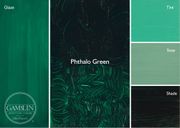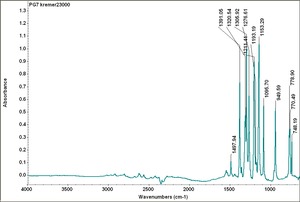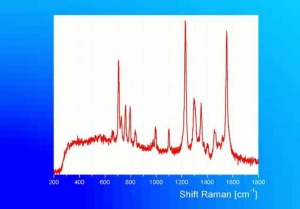Difference between revisions of "Phthalocyanine green"
| Line 20: | Line 20: | ||
== Risks == | == Risks == | ||
| − | Suspected carcinogen, teratogen. May be contaminated with traces of PCB. | + | * Suspected carcinogen, teratogen. |
| − | + | * May be contaminated with traces of PCB. | |
| + | * Sigma Aldrich: [https://www.sigmaaldrich.com/US/en/product/aldrich/cds000384 SDS] | ||
== Physical and Chemical Properties == | == Physical and Chemical Properties == | ||
Latest revision as of 11:43, 4 August 2022
Description
A synthetic organic material composed of chlorinated copper phthalocyanine (chlorinated Phthalocyanine blue). Phthalocyanine blue was introduced as a industrial pigment in 1935 and the green derivative was first sold in 1938. Phthalocyanine green is usually adsorbed on an aluminum hydrate base to form a deep vivid green color that is used as a substitute for viridian. The permanent pigment is unaffected by light, heat, and chemicals. Phthalocyanine green is used as a colorant in inks, paints, chalks, leather, pencils, and photographs.
Types
| Pigment number | Manufacture | Pigment name | Manufacture CI number | Comments |
|---|---|---|---|---|
| PG007 | Kremer | phthalocyanine green | 23000 | same FTIR spectrum as PG007 Sun |
| PG007 | Sun | phthalocyanine green, blue shade | 264-0414 |
Synonyms and Related Terms
Pigment Green 7; CI 74260; Phtalocyaningrün (Deut.); vert de phtalocyanine (Fr.); verde de ftalocianina (Esp.); verde ftalo (It.); phtalocyanine groen (Ned.); verde de ftalocianina (Port.); phthalo green; copper phthalocyanine green; Monastral Fast Green; thalo green; Heliogen green; Windsor Green; Talens Green
Risks
- Suspected carcinogen, teratogen.
- May be contaminated with traces of PCB.
- Sigma Aldrich: SDS
Physical and Chemical Properties
- Insoluble in organic solvents, water and alkalis.
- Slowly decomposes in strong acids.
- Fine grain, rounded, translucent particles with strong birefringence; the color is unchanged with a Chelsea filter
- Composition = C32H0-2N8Cl14-16Cu
- Density = 2.1
- Refractive Index = 1.40
Resources and Citations
- Nicholas Eastaugh, Valentine Walsh, Tracey Chaplin, Ruth Siddall, Pigment Compendium, Elsevier Butterworth-Heinemann, Oxford, 2004
- R. J. Gettens, G.L. Stout, Painting Materials, A Short Encyclopaedia, Dover Publications, New York, 1966
- Reed Kay, The Painter's Guide To Studio Methods and Materials, Prentice-Hall, Inc., Englewood Cliffs, NJ, 1983
- Ralph Mayer, A Dictionary of Art Terms and Techniques, Harper and Row Publishers, New York, 1969 (also 1945 printing)
- Hermann Kuhn, Conservation and Restoration of Works of Art and Antiquities, Butterworths, London, 1986
- Michael McCann, Artist Beware, Watson-Guptill Publications, New York City, 1979
- Website: www.handprint.com
- M. de Keijzer, 'A survey of red and yellow modern synthetic organic artists pigments discovered in the 20th century and used in oil colors', ICOM Preprints Lyons, France, Getty Conservation Institute, Los Angeles, p. 369, 1999
- Art and Architecture Thesaurus Online, http://www.getty.edu/research/tools/vocabulary/aat/, J. Paul Getty Trust, Los Angeles, 2000


